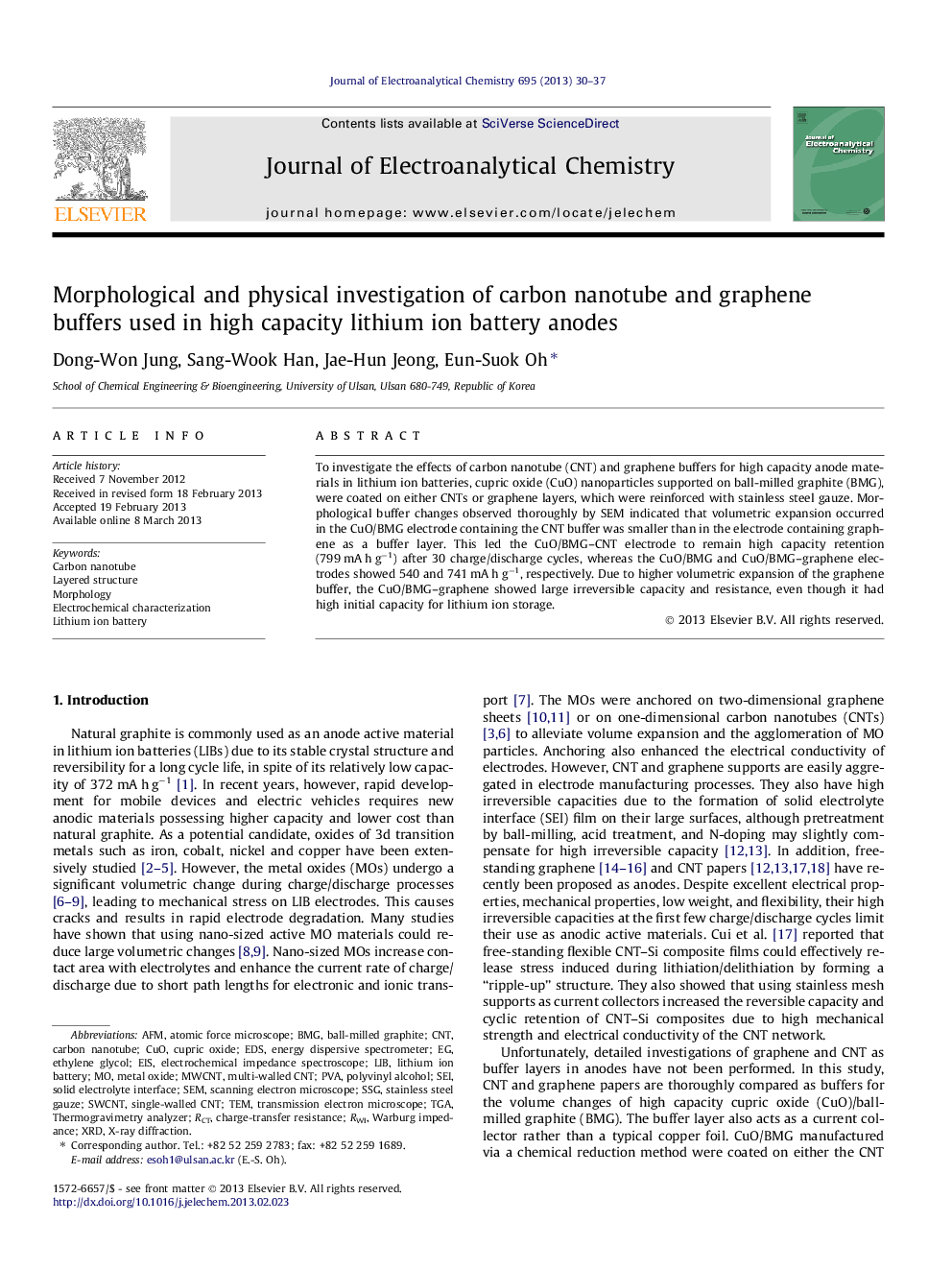| Article ID | Journal | Published Year | Pages | File Type |
|---|---|---|---|---|
| 219105 | Journal of Electroanalytical Chemistry | 2013 | 8 Pages |
To investigate the effects of carbon nanotube (CNT) and graphene buffers for high capacity anode materials in lithium ion batteries, cupric oxide (CuO) nanoparticles supported on ball-milled graphite (BMG), were coated on either CNTs or graphene layers, which were reinforced with stainless steel gauze. Morphological buffer changes observed thoroughly by SEM indicated that volumetric expansion occurred in the CuO/BMG electrode containing the CNT buffer was smaller than in the electrode containing graphene as a buffer layer. This led the CuO/BMG–CNT electrode to remain high capacity retention (799 mA h g−1) after 30 charge/discharge cycles, whereas the CuO/BMG and CuO/BMG–graphene electrodes showed 540 and 741 mA h g−1, respectively. Due to higher volumetric expansion of the graphene buffer, the CuO/BMG–graphene showed large irreversible capacity and resistance, even though it had high initial capacity for lithium ion storage.
Graphical abstractFigure optionsDownload full-size imageDownload as PowerPoint slideHighlights► Graphene and CNT buffers for high capacity CuO/ball-milled graphite (BMG) composites were prepared. ► Morphological buffer changes were clearly observed by SEM. ► The CNT layer was much more an effective buffer than graphene paper. ► Due to high volume expansion of graphene, the CuO/BMG–graphene showed large irreversible capacity and resistance.
